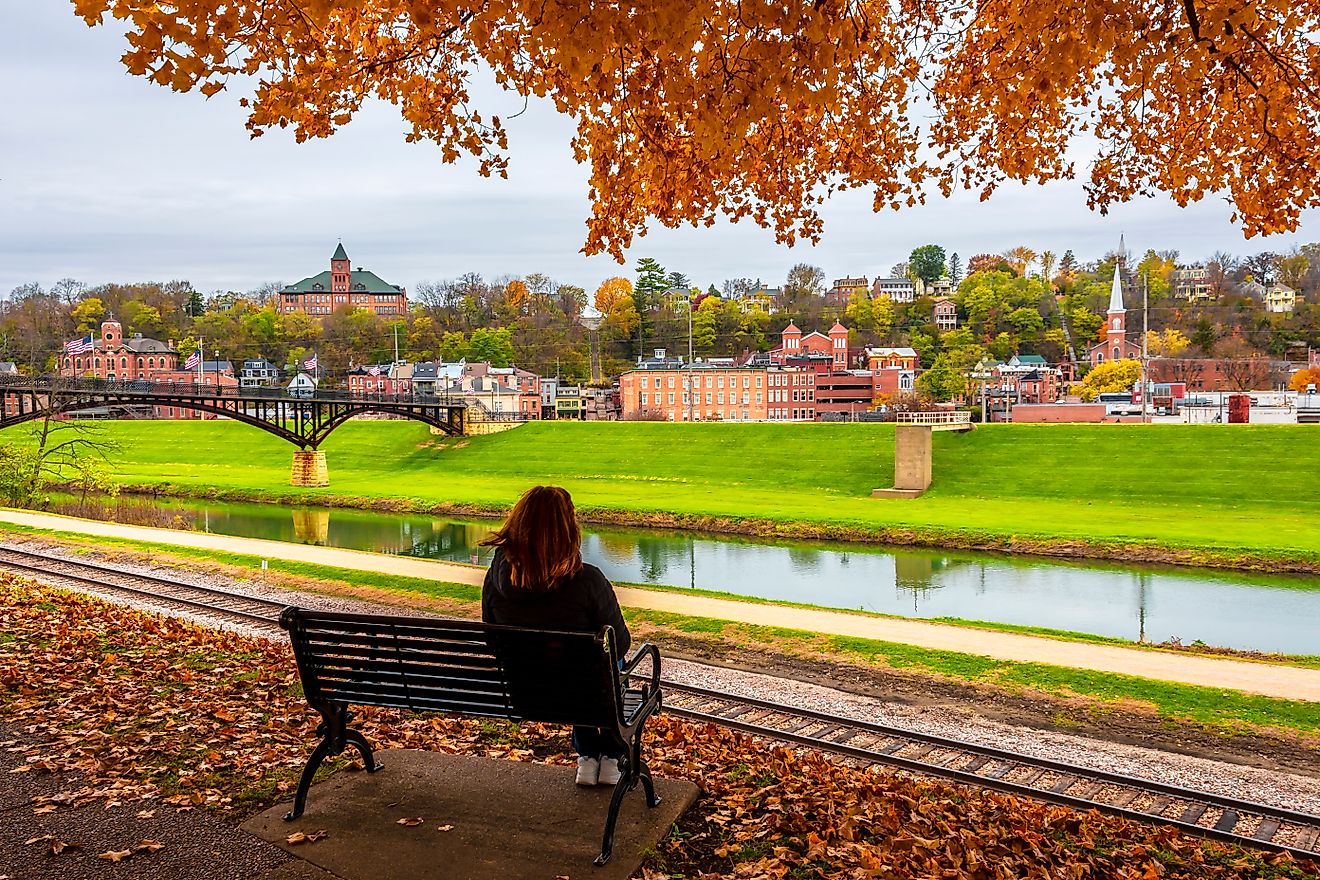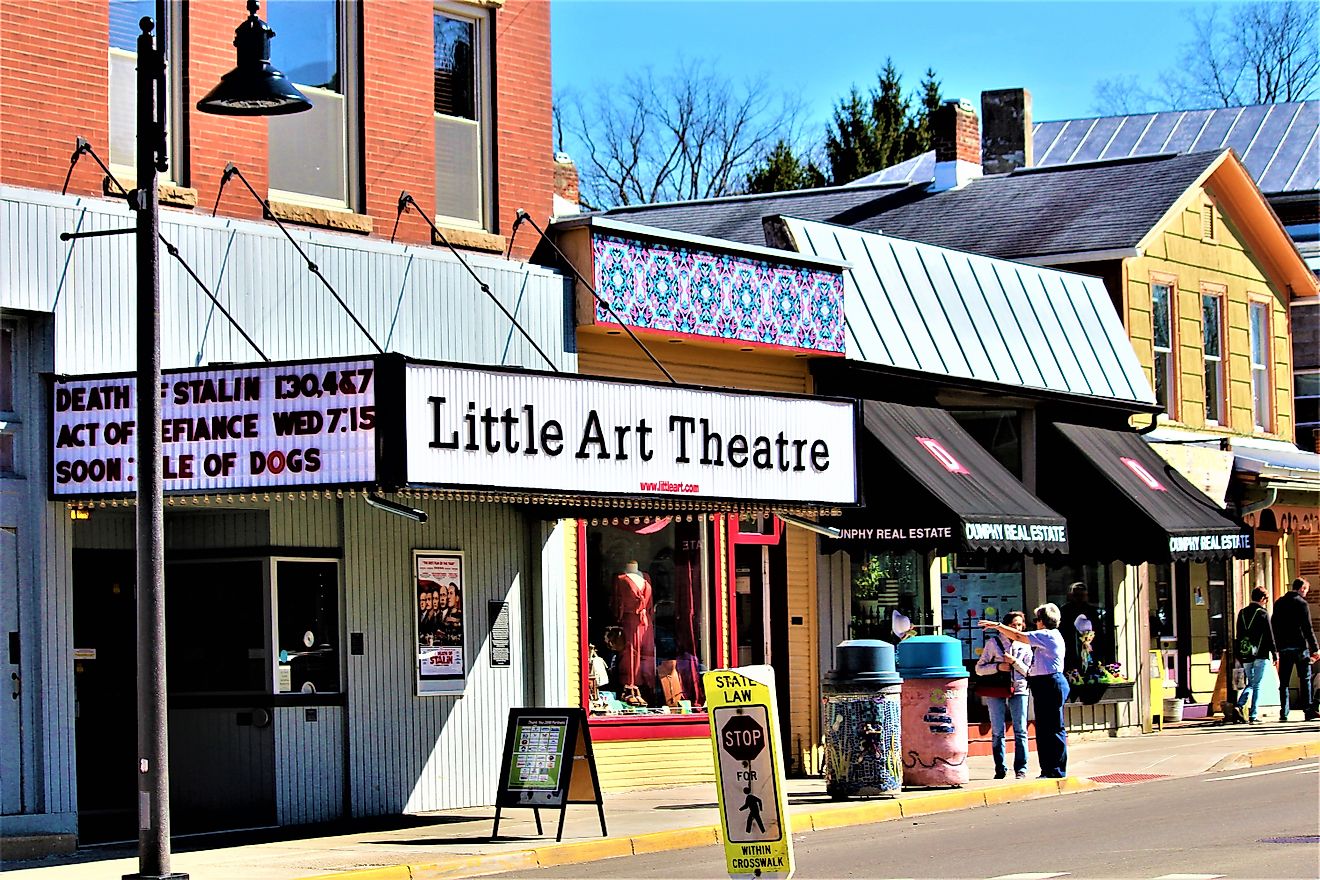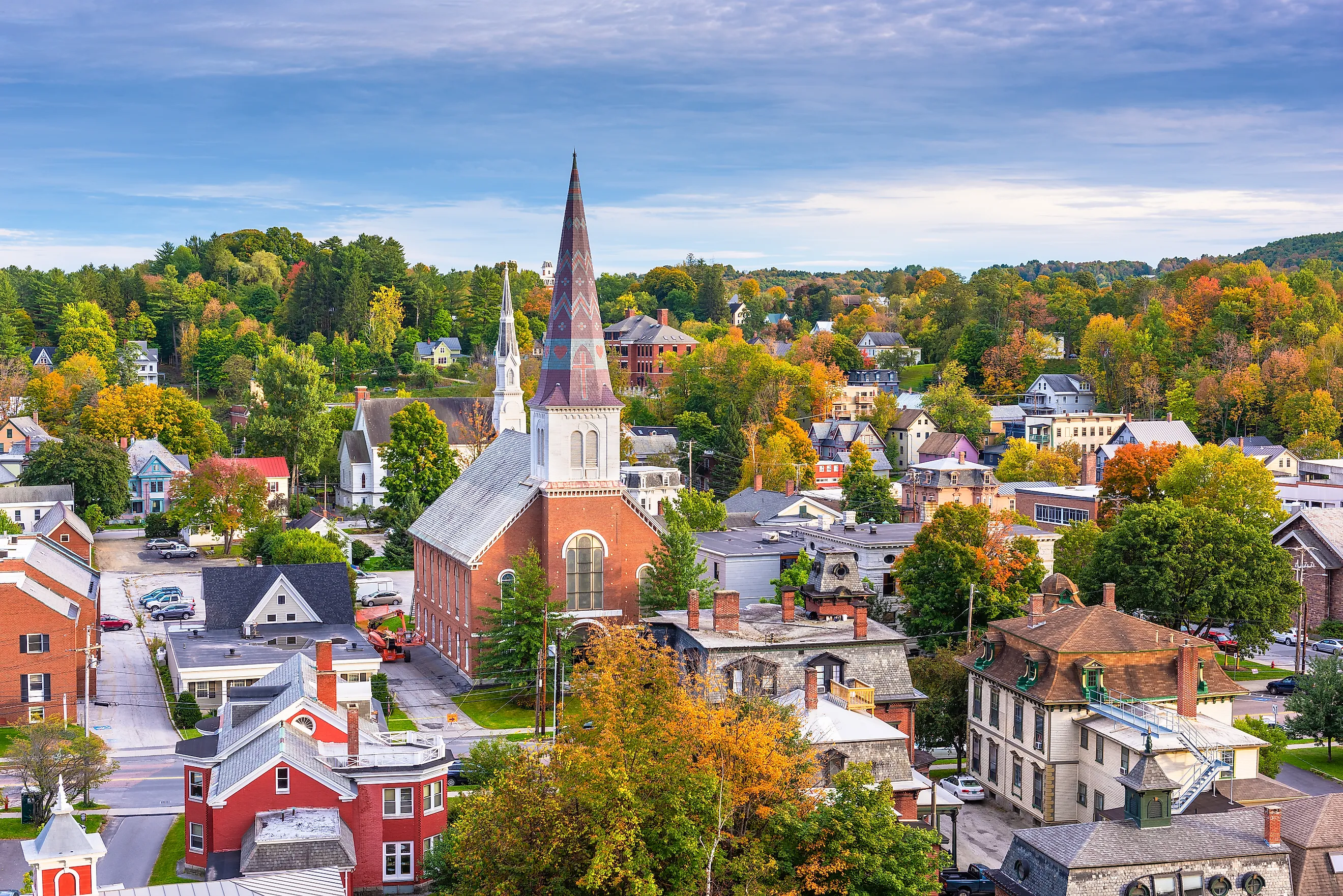
America's 8 Smallest Capital Cities and Why They're Worth Visiting
The United States contains several state capitals that are renowned around the world, such as Austin (Texas), Denver (Colorado), Boston (Massachusetts), and many more. One thing these well-known destinations have in common is high population counts, as many of them are truly economic, cultural, and, of course, political centers of their regions.
But the capitals that rank the smallest in terms of how many residents call them home, often tiny in size and scope, still have much to offer their visitors, whether travelling for pleasure or business. Take a look at why you should consider these right places for an off-the-beaten-path adventure in the U.S.
Annapolis, Maryland (Pop. 40,700)
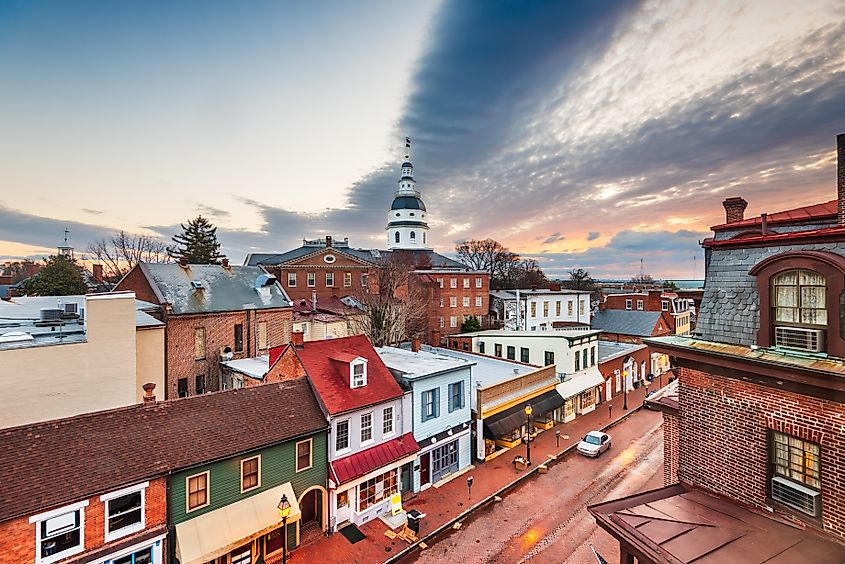
Annapolis, the capital of Maryland since 1694, is one of the oldest cities in the United States. It even served briefly as the nation's capital from 1783 to 1784 and was the site where the Continental Congress accepted George Washington’s resignation from the military. Notably, its genuine colonial aesthetic remains largely intact, making its Colonial Annapolis Historic District one of the best-preserved in the country and one that every history buff should visit at least once.
Sitting on the Chesapeake Bay, Annapolis is also famous for its maritime connections. It is home to the U.S. Naval Academy, which has operated here since 1845. The Naval Academy campus, open to visitors, contains an excellent museum and the tomb of John Paul Jones, the "Father of the American Navy." Nearby, the Maryland State House, America’s oldest state capitol still in continuous use, is also very much worth a stop, as it hosts daily tours.
Be sure to stroll around the downtown core of Annapolis, too, where you can enjoy a huge collection of 18th-century buildings, waterfront restaurants, and independent shops. The city also serves as quite the cultural hub along the East Coast, with galleries, performing arts venues, and seasonal festivals like the Annapolis Boat Shows drawing thousands more travelers every year to America's eighth smallest capital.
Dover, Delaware (Pop. 40,200)
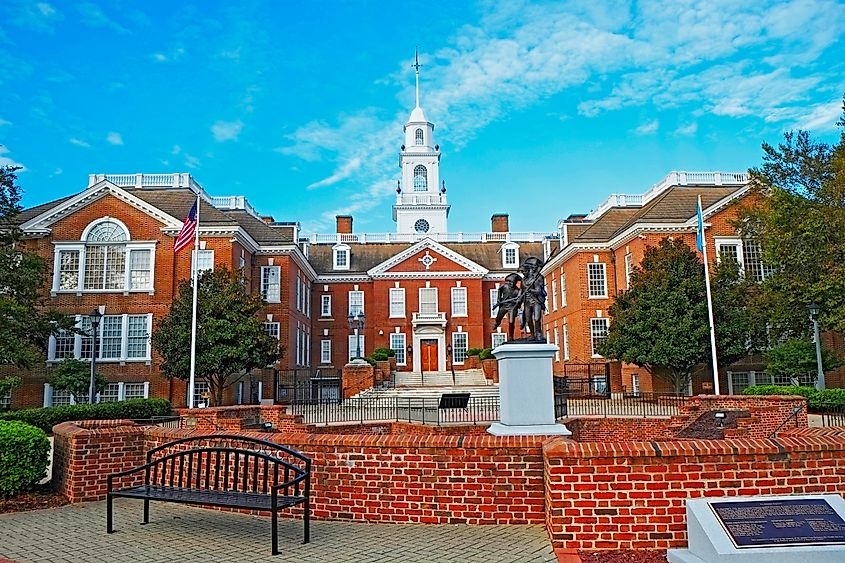
Founded in 1683 and designated the capital of Delaware in 1777, Dover is another destination that combines its deep colonial roots with a quiet, small-city pace near the Atlantic coast. The Green, a central square laid out by William Penn, endures as the core of the historic district here and reflects the city's very progressive 18th-century planning. Furthermore, Dover played a key role in early American governance, as Delaware was the first state to ratify the U.S. Constitution, earning its appropriate nickname of “The First State.”
Delve deeper into the area's past at the Legislative Hall, the current state capitol, a location that anchors the Capital Complex and is open for guided tours throughout the year. The nearby Old State House, completed in 1791, offers more insight into early state politics, with wonderful old-timey architecture to match. Dover’s First State Heritage Park connects these landmarks with museums and a web of urban walking paths, making it a fun and convenient spot to spend an afternoon in. If you're interested in military history, make sure to hop over to see the Air Mobility Command Museum, located at Dover Air Force Base. This attraction houses an extensive collection of vintage aircraft and flight-related exhibits.
Helena, Montana (Pop. 35,000)
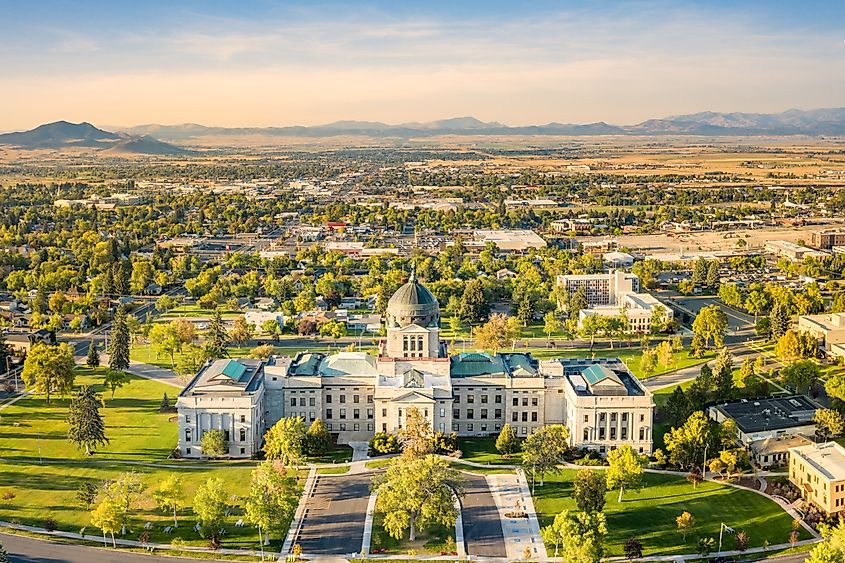
Helena became Montana’s capital in 1875, fueled by a gold strike in nearby Last Chance Gulch that made it one of the wealthiest cities west of the Mississippi for a time in the late 19th century. Evidence of that wealth can still be seen in the city’s old-school architecture, especially the grand mansions along the surrounding hillsides and the towering spires of the Cathedral of St. Helena.
Helena's downtown core, built along the original gold miners' campsite, has many more goodies for you to feast your eyes on. For one, the Last Chance Gulch has been converted into a pedestrian mall lined with restaurants, hotels, galleries, and shopping areas. Moreover, the Montana State Capitol, completed in 1902, sits at the edge of the core and offers free public tours that highlight the state’s broader history and installations of regional art.
Helena's countryside is exemplified by forested Rocky Mountain foothills and is intersected by a network of trails. For a very easy-to-reach slice of green space, Mount Helena City Park is just minutes from downtown and provides 360-degree views of Helena and the surrounding valley beyond.
Juneau, Alaska (Pop. 31,600)
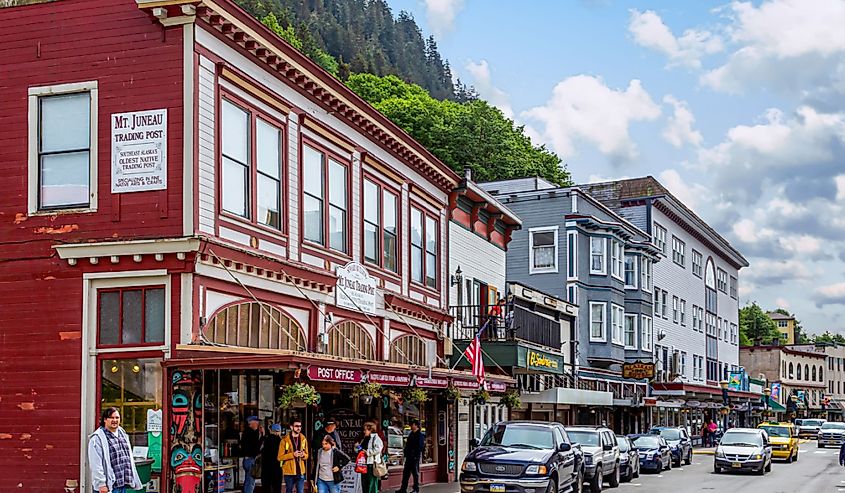
Juneau has served as Alaska’s capital since 1906, when the territorial government moved from Sitka. Set between the Gastineau Channel and the foot of Mount Roberts, Juneau is the only U.S. capital inaccessible by road, but it has perhaps the most to offer in terms of natural beauty. Visitors arrive mainly by plane or ferry, making the city feel more like a remote outpost than a political center.
Founded during a gold rush in 1881, Juneau's storied past is still visible in its downtown saloons, historic hotels, and narrow streets lined with colorful wooden buildings. The Alaska State Museum and the State Capitol, both also located downtown, highlight the region’s cultural heritage and political development through a number of curated exhibits, making it an ideal way to spend a rainy day—a good spot to have in mind in a region that often sees high levels of precipitation.
Downtown Juneau is also renowned for containing a strong presence of Native Alaskan art, non-chain businesses, and some of the freshest seafood restaurants in the country. If that last part caught your eye, Tracy’s King Crab Shack-Main is a must-visit, specializing in locally harvested Alaskan king crab.
But what sets Juneau truly apart as a destination is its immediate proximity to vast wildernesses. The Mendenhall Glacier, for example, just 12 miles from the city center, is one of Alaska’s most accessible glaciers, with hiking trails and a visitor center nearby. Whale-watching excursions, sea kayaking trips, and backcountry flights all launch directly from town as well. For a more unique way to see the land, however, the Mount Roberts Tramway offers sweeping views of the coast and rainforest below without having to exhaust yourself to get there.
Frankfort, Kentucky (Pop. 28,600)
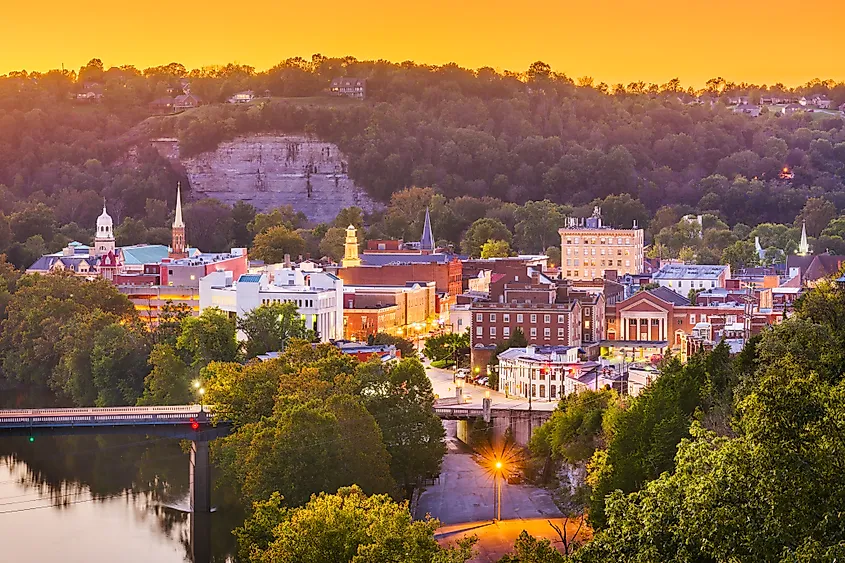
Frankfort has remained Kentucky’s capital since 1792, chosen for its central location along the Kentucky River. Despite its vital status in the state's politics, it is remarkably low-key.
The Kentucky Old State Capitol building is an ideal spot to first stop off at. This eye-catching landmark stands out for its iconic Greek Revival design and was the site of much political tension during the Civil War, as Kentucky bordered both the Northern Union and the Southern Confederacy. Just uphill, the current Kentucky State Capitol, built in 1910, is another one of the grandest public buildings in the South, known for its manicured grounds you can stroll around on during a nice day outside. Both buildings are open to visitors.
The nearby Kentucky Historical Society Museum will surely give you another well-curated overview of the state’s past, while the Frankfort Cemetery, located on a bluff above the riverfront, contains the graves of renowned former residents, like Daniel Boone, and features advantageous views of the city.
Frankfort also serves as a gateway to Kentucky’s "bourbon country." Buffalo Trace, one of the country's oldest distilleries, operates just west of downtown, offering guided tours and tastings. The Woodford Reserve Distillery and several others, both big and small, provide similar experiences for whiskey-loving tourists in the area.
Augusta, Maine (Pop. 19,200)

Founded in 1827, Augusta sits along the Kennebec River, a historically significant waterway that helped drive the city’s early economy through shipping and milling. The river continues to play a central role in the city's geography and identity, with trail networks and maintained green spaces lining its banks, fueling the newer tourism industry in town.
The Maine State House, designed by Charles Bulfinch and completed in 1832, anchors the government district, and like most other state capitols, is open for self-guided and docent-led tours. Next door, the Maine State Museum presents exhibits more focused on natural and cultural subjects that span thousands of years in the surrounding region, from Wabanaki history to the industrial era and beyond.
Downtown Augusta has seen significant revitalization over the centuries, with new eateries, music venues, and other modern amenities appearing among the older brick buildings. The Augusta Colonial Theater, dating back to 1913 (and rebuilt after a fire in 1926), is undergoing continuous restoration and is a great example of this.
Nearby, Capitol Park and the Kennebec River Rail Trail provide some of the city's best outdoor attractions. Both are easily accessible and boast views of the water and city skyline.
Pierre, South Dakota (Pop. 13,800)
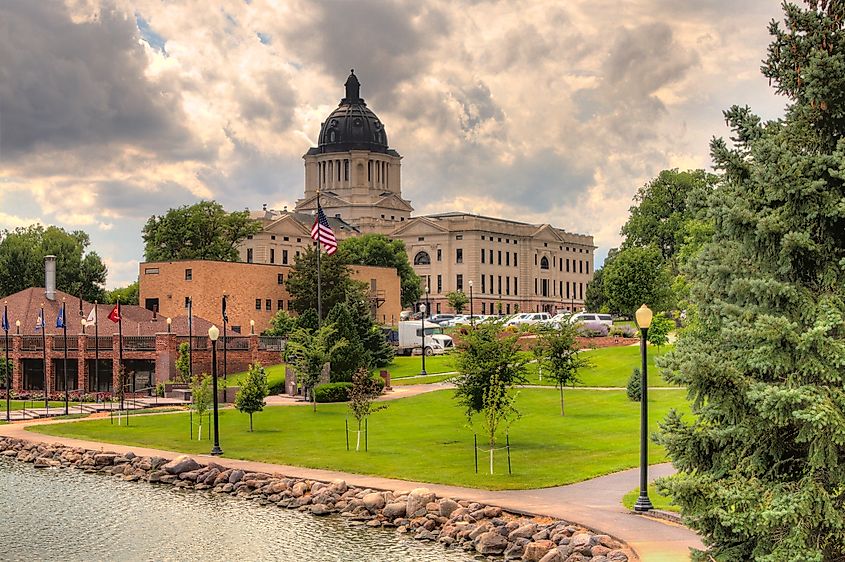
Since gaining its statehood in 1889, Pierre has been the unassuming capital of the also relatively unassuming state of South Dakota. Located on the eastern bank of the Missouri River, it is the second-least populated state capital in the U.S., yet it holds a surprising amount of historical and geographic significance in the Midwest. This small settlement was established in 1880 during railroad expansion and named after fur trader Pierre Chouteau Jr., who helped open trade routes along the river.
In its remote location, Pierre is also closely tied to many of the natural draws nearby. The Missouri River provides ways to go boating and fishing, while the nearby Oahe Dam, one of the largest earth-rolled dams in the world, created Lake Oahe, a major destination for all sorts of other water-based recreation. Trails, campgrounds, and hunting lands further surround the area, attracting outdoor travelers year-round to this beautiful, open prairie/badland landscape.
The current South Dakota State Capitol building, completed in 1910, is another wonderfully scenic location in town. It features marble interiors, terrazzo tile mosaics, and landscaped grounds, including a war memorial and tranquil walking paths around Capitol Lake. Once it reopens in late 2025 for renovation, make a point of stopping at the South Dakota Cultural Heritage Center, which documents South Dakota’s robust Indigenous and pioneer histories.
Montpelier, Vermont (Pop. 7,900)
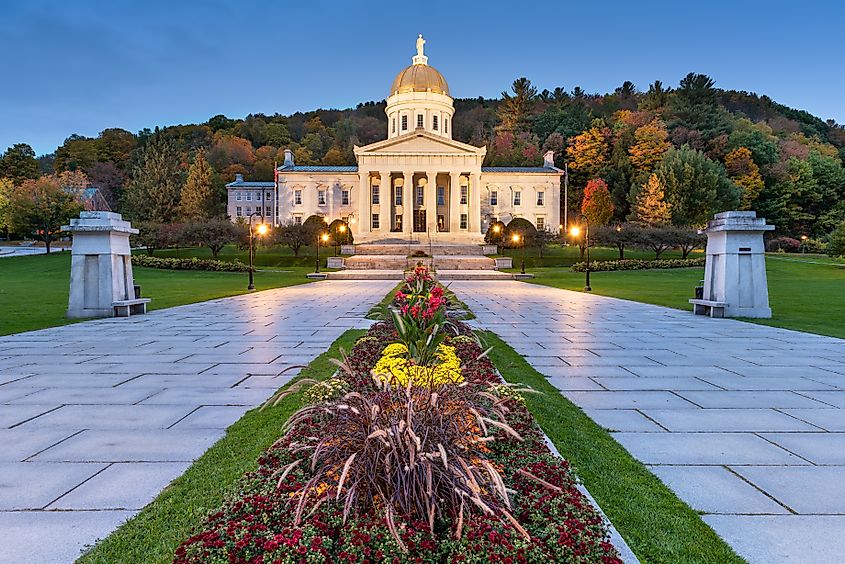
Montpelier is the smallest state capital in the United States by population. Chartered in 1781, settled permanently in 1787, and named after the French city of Montpellier, it gained its current status in 1805 due to its central location and access to the Winooski River. Despite its minuscule size (even when compared to most other countryside towns in America), Montpelier has managed to be one of the most unique and memorable capital cities in the nation.
The Vermont State House, completed in 1859, is one of the oldest and best-preserved capitols in America. Its gold dome and Greek-inspired architecture stand out in a city with few to no tall buildings. Its position against the surrounding wooded hills of north-central Vermont only adds to its picturesque and remote vibe.
The quaint downtown area nearby hosts other landmarks, like the historic Savoy Theatre, the Vermont Historical Society Museum, and Hubbard Tower. The latter is a stone observation tower that is a perfect vantage point to see the brilliant colors of the area's forests in the fall season.
Surrounded by foothills blanketed in dense woodlands, Montpelier is a sought-after base for hiking, cycling, hunting, and camping in the warmer months, and even cross-country skiing when snow is on the ground. Some specific recommendations include the North Branch River Park and Hubbard Park, which are located just minutes from downtown, with several other parks and green spaces easily accessible within a short drive or bike ride, too.
Experience These Lesser-Known Capital Cities Today
If escaping the hustle and bustle of America's big cities, but still having some modern comforts, is something you're seeking out for your next escape, the above-mentioned cities are not just historically relevant, but ideal choices. Whether roadtripping throughout the Midwest, seeing the epic natural wonders of Alaska, touring around the country's coastlines, or hoping to learn more about the history of the U.S., be sure to stop off at one or more of these underrated destinations this year.







